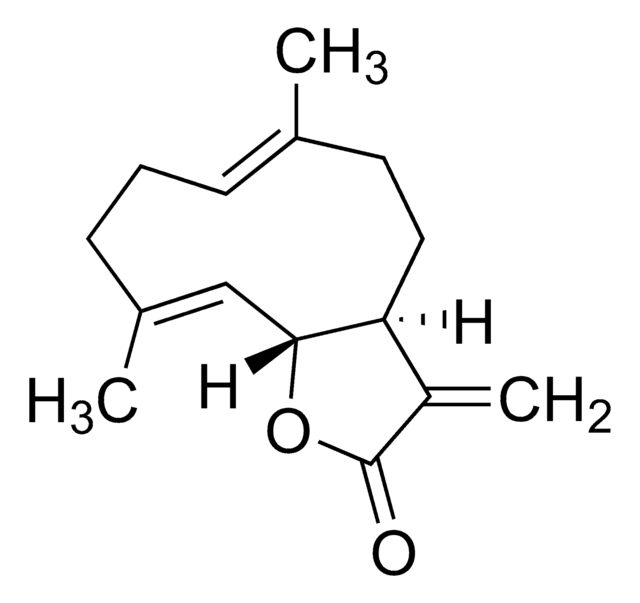E1036
116-9e
≥98% (HPLC), powder
Sinónimos:
116-9e, 4-[1,1′-Biphenyl]-4-yl-3,4-dihydro-6-methyl-2-oxo-5-[(phenylmethoxy)carbonyl]-1(2H)-pyrimidinehexanoic acid
About This Item
Productos recomendados
assay
≥98% (HPLC)
form
powder
color
white to off-white
solubility
DMSO: >20 mg/mL
storage temp.
2-8°C
SMILES string
CC1=C(C(NC(=O)N1CCCCCC(O)=O)c2ccc(cc2)-c3ccccc3)C(=O)OCc4ccccc4
InChI
1S/C31H32N2O5/c1-22-28(30(36)38-21-23-11-5-2-6-12-23)29(32-31(37)33(22)20-10-4-9-15-27(34)35)26-18-16-25(17-19-26)24-13-7-3-8-14-24/h2-3,5-8,11-14,16-19,29H,4,9-10,15,20-21H2,1H3,(H,32,37)(H,34,35)
InChI key
GHFQWLNXJMUCGC-UHFFFAOYSA-N
Application
Biochem/physiol Actions
The same compound by a different name, MAL2-11B, has been found to inhibit the activity of a viral J-domain protein, large tumor antigen (TAg). MAL2-11B inhibited both TAg′s endogenous ATPase activity and the TAg-mediated activation of Hsp70.
signalword
Danger
hcodes
Hazard Classifications
Acute Tox. 3 Oral - Aquatic Acute 1 - Aquatic Chronic 1
Storage Class
6.1C - Combustible, acute toxic Cat.3 / toxic compounds or compounds which causing chronic effects
wgk_germany
WGK 3
flash_point_f
Not applicable
flash_point_c
Not applicable
Certificados de análisis (COA)
Busque Certificados de análisis (COA) introduciendo el número de lote del producto. Los números de lote se encuentran en la etiqueta del producto después de las palabras «Lot» o «Batch»
¿Ya tiene este producto?
Encuentre la documentación para los productos que ha comprado recientemente en la Biblioteca de documentos.
Nuestro equipo de científicos tiene experiencia en todas las áreas de investigación: Ciencias de la vida, Ciencia de los materiales, Síntesis química, Cromatografía, Analítica y muchas otras.
Póngase en contacto con el Servicio técnico








